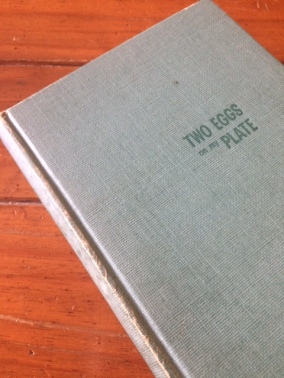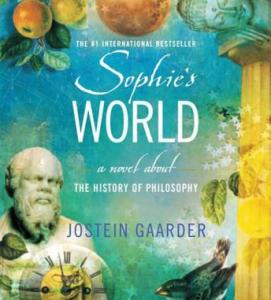
Two Eggs on my Plate, by Olaf Reed Olsen, translated from the Norwegian by F. H. Lyon
This is a true story of Norwegian resistance fighters during World War II, while their country was occupied and controlled by Nazi Germany. It is an autobiography, since the writer is recounting his own adventures, and it is a thrilling tale of danger and suspense, espionage and sabotage.
The story begins right after Norway is invaded by the Germans. Olsen and his friends want to fight, but most of the country is in total confusion, and they have no organization that will help them strike back, until Olsen meets a British agent, who starts to give them assignments: collecting information about troop movements, and taking photographs of the German positions to send to England. Their first big escapade is blowing up a bridge, to prevent supplies from reaching the German forces.
I glanced at the illuminated face of my wrist watch: a quarter to four! The sweat ran down me as I worked feverishly; the whole charge under the central beam, the fuse down—and I after it. We had not a second to lose: the Germans might be back at any moment! An old raincoat served as a screen while I lighted the fuses.
Many times Olsen narrowly escapes death. He is captured and questioned on one of his missions, but escapes on his way to prison. Eventually, as the area becomes too dangerous for him and his friends to continue their work, they decide to cross the North Sea, and seek refuge in England. In a small boat, with only three men on board, they embark on a voyage which once again nearly kills them. At one point, they are stopped by the German coast patrol, for being outside the allowed fishing areas, but Olsen convinces the lieutenant to give them a tow back to the Norwegian shore, claiming they are fishermen, who drifted too far out in a calm. Between this setback, and a storm that blows them south, off course, the journey takes far longer than anticipated and they are dehydrated and starving by the time they are finally picked up by a British destroyer.
Rolf danced around the mast like a madman. Kaare sat aft holding tight to the tiller, while the tears ran down his face. I myself could hardly see through my tears.
In England and Canada, Olsen trains as a radio operator, and a parachuter. When the time comes for him to return to Norway, he is served two eggs for breakfast, the custom for all men leaving on a mission, since rationing has made eggs into a luxury (hence the title of the book). Olsen runs a radio station in the woods of Norway, sometimes right underneath the Germans’ noses, moving all his equipment every time the Germans came close to discovering him. He sends information back to England every day, sometimes every hour: weather conditions, troop deployments, ships entering and leaving the harbor, and anything else that the British ask for. When he sends news of a convoy of ships heading out to sea, and hears the next day that they had been sunk by British planes, he can see the result of his work.
Once more, before the end of the war, he has to flee from Norway, this time traveling over land into Sweden, but again he returns, to help relay information during the crucial days leading up to D-day.
My Grandpa, who is part Norwegian, was the first one to introduce me to this story, and it has been a favorite of mine ever since. I just reread it recently, after running across it in a lovely little used bookstore. This time I read it aloud, to share the experience with my husband. I’m amazed at the accomplishments of this one man! He took enormous risks, and escaped capture in the most extraordinary ways. For anyone who loves stories about World War II, or stories about espionage and undercover work in general, this is a book you will not want to miss!
The only drawback I can think of in the writing and storytelling is the setting: because I am not familiar with Norway, the names were hard to pronounce, and I had a hard time picturing where all the places were in relation to one another. Some maps would have been helpful.
As far as language is concerned, there are a few mild swear words. There is also one crudity, in relating one of Olsen’s run-ins with the Nazis. Although this is about a war, and a nasty war at that, there are no graphic descriptions of violence, though Olsen does recount getting beat up one time when he is captured by the Germans. He mentions friends of his getting sent to concentration camps in Germany, but it is not detailed. The “bad guys” are certainly not the only ones committing violence however: Olsen often carries a revolver, and he is willing to shoot to kill if his life is at risk, although it is usually safer and better for the success of his missions if he can avoid open confrontation.
As with many true life stories, there are great themes in Two Eggs on my Plate.
Courage is ubiquitous throughout the book: not only are Olsen and his friends risking their lives every day, but they are also often supported by others in the community. Farmers provide them with shelter, and the electricity needed to run the radio station. A railway official helps them transport contraband equipment from city to city, which requires breaking about a dozen regulations. Even children bring warning of German raids in town. There is pain and grief, as families lose loved ones, but they never stop fighting to keep control of their own lives.
The theme that strikes me most, though, is Olsen’s incredible determination to overcome every obstacle and endure every hardship. The possible illustrations are endless: when he lands by parachute the first time, for instance, he dislocates his knee and faints, falling into a tree because the wind was blowing much to hard for a good drop, yet he still gets the parachute and supplies hidden, then drags himself through the forest, traveling for a day and a night before finding a farm where he can rest—and then the farm belongs to a Nazi sympathizer! He never gives up, no matter how impossible the task might seem, but is always willing to try, and to keep going until the Germans literally chase him away from wherever he is working.
The three of us running for our lives will never forget that hunt, which went on for hours in every direction across the moors. Down cliffs and up slopes, over pools and brooks, now lying flat on our stomachs, now in a wild chase under a rain of lead.
Without friendship and trust in other people, however, Olsen could not have accomplished what he did. Those who worked closely with him, helping to run the station, could have given him away without even meaning to do so. Sometimes he also had to trust complete strangers, feeling out their political leanings by carefully steered conversation and then enlisting their help, although he usually gave them a fictional account of himself, to protect both sides.
For two days we lay buried the hay in the outside loft of the Aabel farm; Anders [the farmer] kept us informed of the latest developments in the neighborhood and supplied with food. Our clothes were in a sorry state after the chase, so when we decided to make a trip into town we had to borrow clothes from Anders.
Olaf Reed Olsen is a Christian, and his faith is mentioned several times throughout book—from the moment he says goodbye to his mother before leaving for England, and through all his experiences. He often mentions praying, and his belief that God is in control of his life, and the one protecting him in perilous circumstances. His confidence that good will triumph over evil is what fuels his courage and determination to fight.
I went round and got everything ready in a desperate hurry, at the same time praying aloud.
We could only hear the rushing of the wind and the roaring of the seas that broke incessantly over the little craft. But in spite of everything we sent up fervent thanks to Him who had arranged this weather. What should we have done if the same wind had come from the west?
Overall, it’s a great adventure story, and I would recommend it to middle teenagers or adults. For younger children especially, I always suggest that parents read first—every family will have different rules and standards of what is acceptable. It could be a good read aloud, if parents are willing to try to tackle the foreign names and places, but younger children might lose interest, as the exciting adventures are interspersed with some slower sections, such as descriptions of the equipment they used, and the political atmosphere in Norway in the 1940s.








